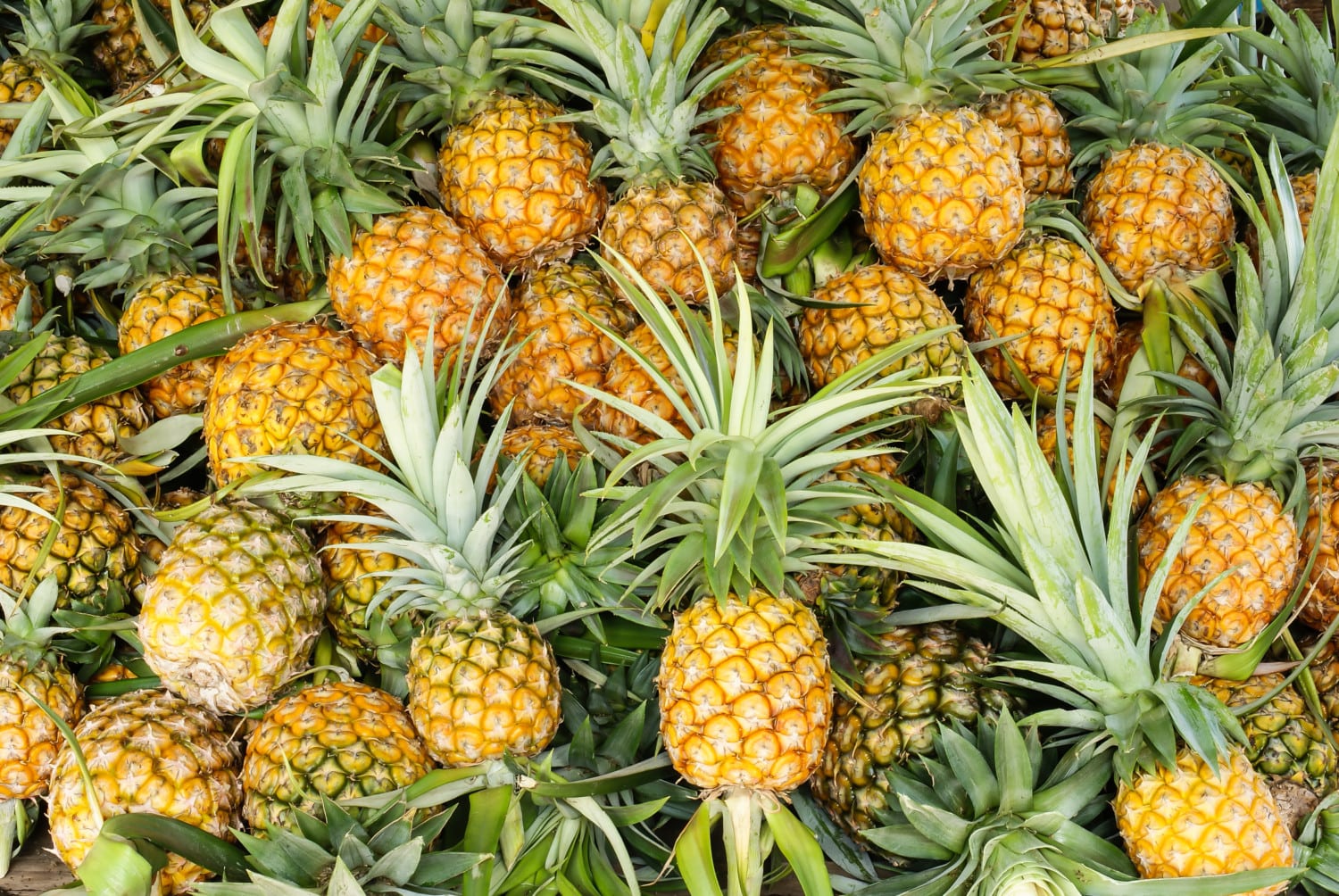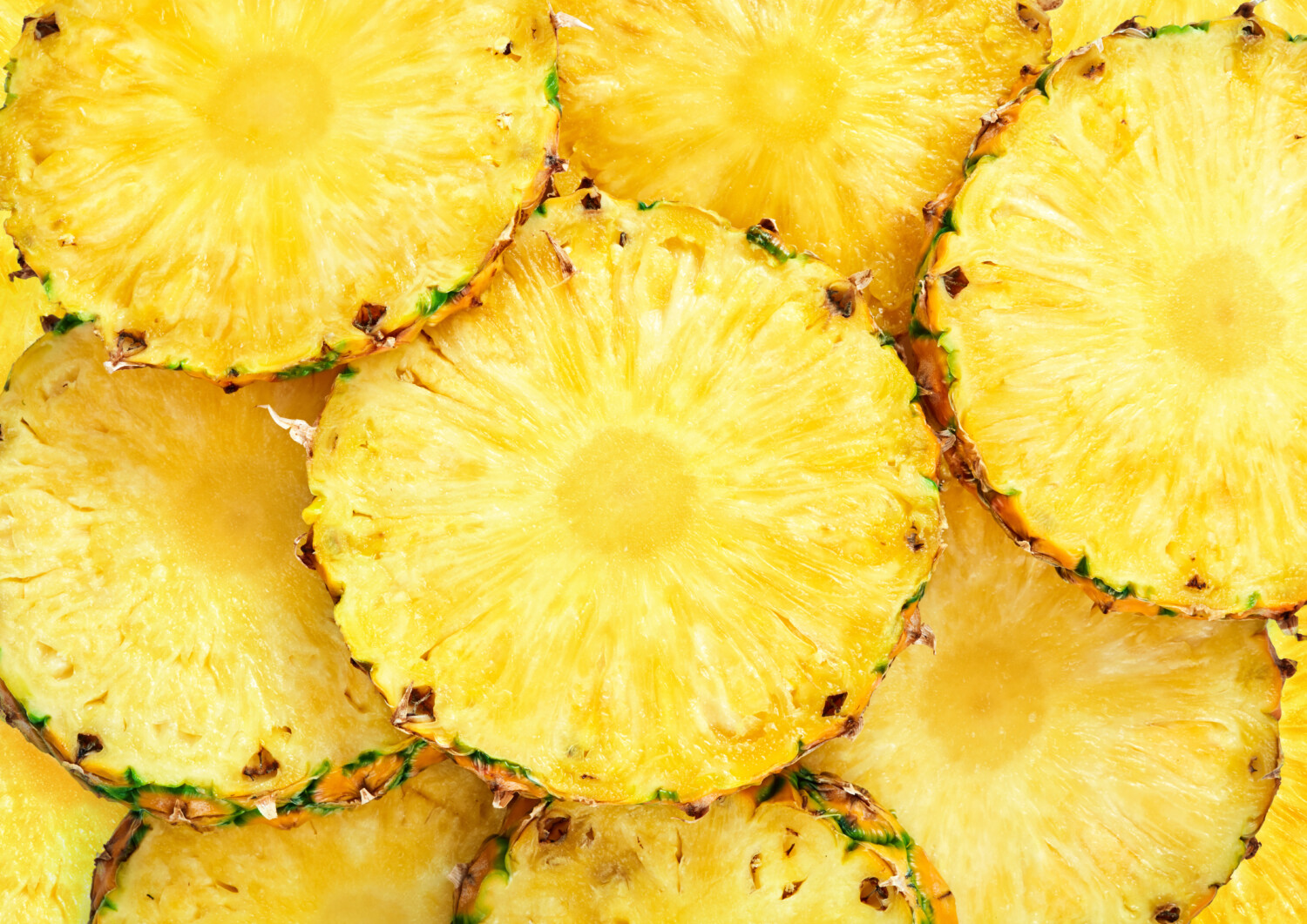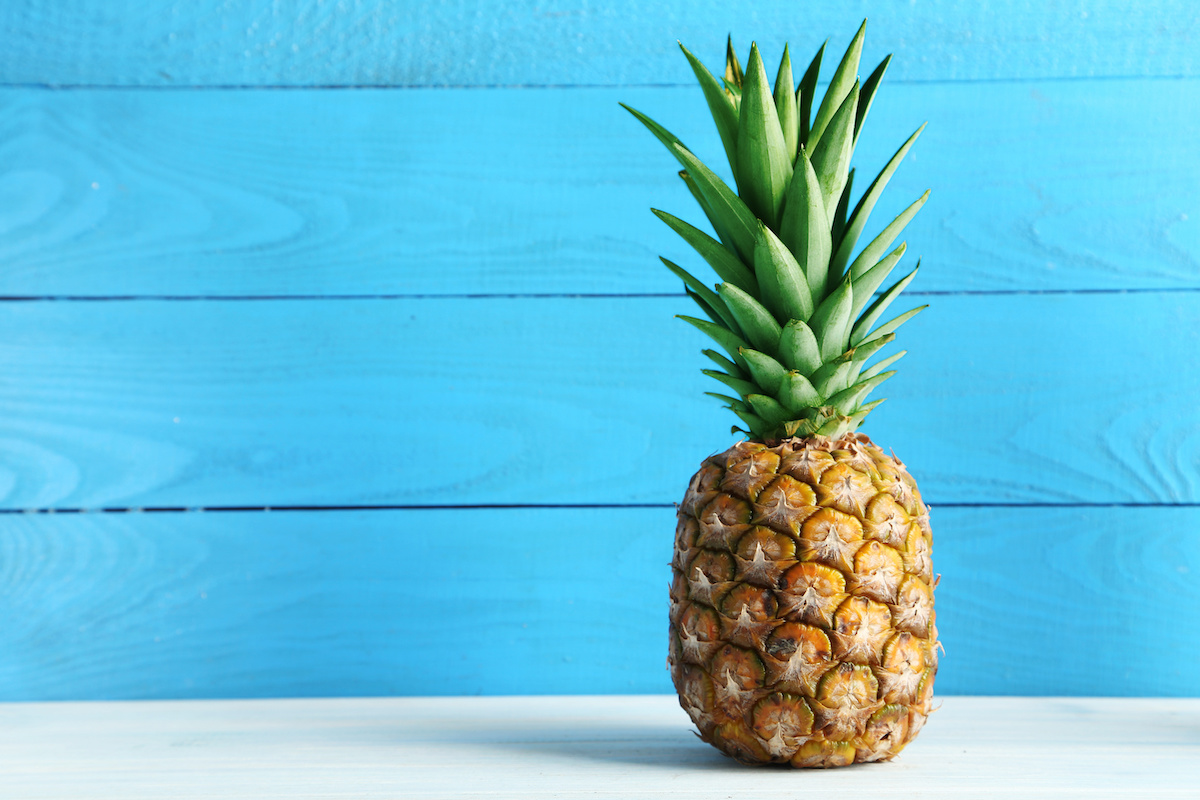Have you ever cut into a pineapple and realized it’s not ripe? Once a piece of unripe fruit is cut, it’s kind of a lost cause, and there’s nothing like spending money on fresh produce only to have it go to waste. Most of the time when this happens, I have to toss it in the compost.
While some fruits are more forthcoming with their ripeness, showing the world they’re ready to be devoured (like avocados and peaches), others can be harder to read. That is, until you know what to look for.
Interestingly, pineapples don’t ripen much after harvesting, but when they do it’s typically a slow process. This means when you bring home a very green pineapple on Monday it may not necessarily be ready for that fruit salad by Friday. The tricky part with pineapples, however, is that color isn’t the only way to determine readiness.
Want to be able to tell if a pineapple is ripe? Reference these simple tricks next time you’re in the produce aisle.

Note The Color
Pineapple color evolves from green-gray to yellow during the ripening process. When it comes to sweetness, the majority of the pineapple should be yellow. However, if you spot a dark orange hue, it may be past its prime.
Hold It In Your Hand
Oftentimes, heavier pineapples are a sign of ripeness. If you pick up one that feels heavier than you’d expect, it may mean it’s juicier.

Give It A Light Squeeze
Touch is another way to tell if a pineapple is ripe. While pineapples have spikes at all stages of ripeness, how they feel will vary. You should feel a slight give when you squeeze a ripe pineapple. No give at all? Put that one back down and move on to the next.
Smell The Base
Give the bottom of the pineapple a sniff. If it smells fruity, it’s probably ripe; however, if it smells a little off, or you catch a whiff of vinegar, don’t buy it — it’s past its prime.
Tug A Leaf
The leaves on the top of the pineapple should be green and healthy looking. Grab ahold of a frond and give it a good yank. If it pulls out easily, you might want to take it home with you. If you can’t pull it out, consider placing it back down on the shelf and trying another one.
While no one way may entirely determine ripeness, using these simple tricks together can help you make a more educated guess.

When you bring your pineapple home from the store, keep it on your counter and put it in the fridge only once it’s completely yellow or after it’s been cut. Refrigerated pineapples are best when consumed within three to five days. If that timeline doesn’t work with your schedule, pop the frozen pieces in the freezer, where they can stay for up to a year.
Now that you know how to tell if a pineapple is ripe, what will you be making with it?
This story originally appeared on Simplemost. Check out Simplemost for additional stories.


